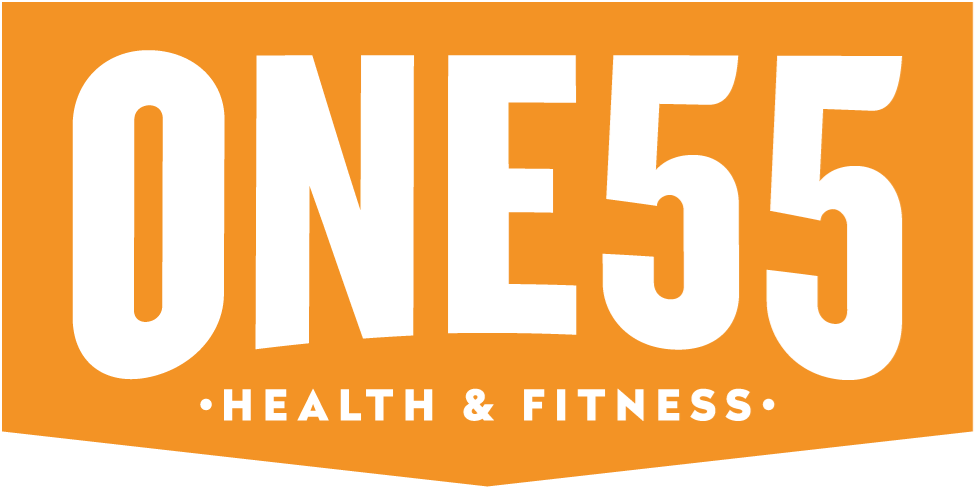Categories
Did you know that these five foods are actually not as healthy for you as you think? It may surprise you, having been told otherwise! Read on to find out why.
It’s easy to fall victim to convincing myths about certain foods, especially when they circulate the internet with a torrential force. When visiting your local NSW gym, it’s important to consume a balanced diet to provide sustenance. That’s why you need to know which foods help your health, and which are deceptively unhealthy.
Here at One55 Health & Fitness, we’ve done the hard yards and uncovered a list of food that aren’t as healthy as you think. You’ll find them useful when you notice more evidence of your hard work after sessions at our gym!
1. Fruit juice
It’s extremely important to peruse the ingredients list of fruit juice before you fall for the “contains real fruit” label.
Sure, there may be some degree of real fruit involved, but a lot of the cases, sugar is added as well, which can be detrimental to your health.
Water is always a better drink option, but if you need your dose of juice, then make sure it’s 100 percent fruit. Also, beware that many juices advertised as certain fruits (pineapple or orange, for example) are mostly made up of apple juice and very little of the promoted fruit.
If it’s touted as having an apple base, you can rest assured that it’ll trump the other fruits more than two-fold.
Juice with added sugars will not help your swim workouts.
2. Sugar-free foods
This also includes diet drinks, as the same principle is applied. Yes, added sugar is bad, but that doesn’t make artificial sweeteners or substitutes any better.
In many cases, these alternatives are much sweeter than actual sugar, and so switching to sugar-free doesn’t do much to help your appetite.
They’re super low in calories, hence the popularity, and many come with an association of being ‘natural’. However, Mayo Clinic explains that in the case of these natural sources such as agave nectar and stevia, they are still processed or refined during the production phase.
As with anything, take artificial sweeteners in moderation. The substance itself may be void of high-calorie content, but that doesn’t necessarily mean the other ingredients are.
3. Cereal
Opt for something with 100 percent whole grains and no added sugar.
Despite what the packaging says, cereal isn’t all that healthy. Sure, there’s many dried fruits and grains involved, but the process of making them into a cereal form can actually destroy many vital nutrients and minerals, according to Muscle and Fitness. Dried fruit can also contain high amounts of sugar.
Grains are also very misleading – though the front says it includes whole grains, what percentage is it to refined grains? Your best bet is to opt for something with 100 per cent whole grains and no added sugar, as suggested by Reader’s Digest.
Loading your cereal with yoghurt doesn’t do any favours to your morning meal, as it’s also full of added sugar that’ll impact your health.
4. Low-fat milk
It’s important here to highlight that full-fat milk is actually healthier than low-fat milk. The latter contains less of the calories and vitamins that a healthy functioning body needs.
Though whole milk also has more saturated fats, they’re naturally produced which Muscle and Fitness explains will support your metabolism and body composition.
In layman’s terms, low-fat milk is the by-product of many healthy factors taken out of whole milk, hence the blander taste and thinner texture.
Avoid low-fat milk in your coffee after the gym.
5. Margarine or butter alternatives
Margarine or table spread, as it’s also commonly called, is essentially hardened oil. That’s why the melting temperature is so low, and why the consistency is so greasy.
According to Men’s Fitness, it’s an inexpensive alternative to butter that’s made with vegetable oil rather than animal fat – hence, it’s not really a dairy product and doesn’t provide any calcium.
The process of extracting vegetable oil is very laborious and has many steps involving chemicals that help to improve the colour and smell, meaning the end result isn’t very healthy.
Knowing which ingredients are deceptively unhealthy can aid you when you look at nutritional information on food packaging. Especially when you’re up keeping your fitness levels at the gym, a well-balanced diet will further help your health.

